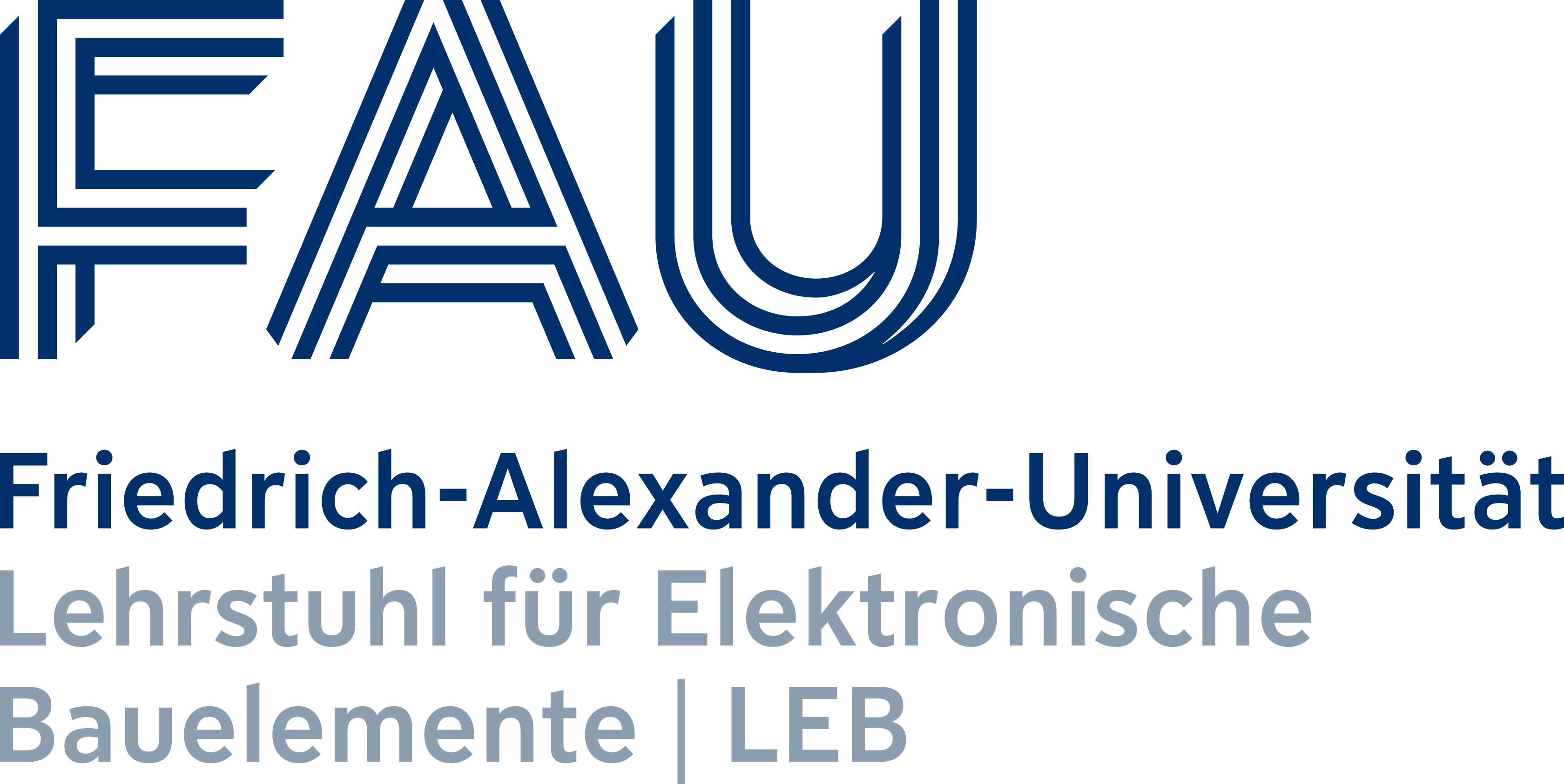Halbleitermaterialsynthese & Prozesstechnologie
Beschreibung des Forschungsbereiches "Halbleitermaterialsynthese & Prozesstechnologie" in CRIS
Projekte:
Projektleitung:
Prof. Dr. rer. nat. Lothar Frey
Lehrstuhlinhaber (2008-2018)
Das Forschungsthema wird im Rahmen eines Promotionsvorhabens bearbeitet.
Die Mikrofluidik bietet weitreichende Möglichkeiten zur Herstellung, Präparation und Untersuchung von Probenmaterial. Dabei sind vor allem sog. „Lab-on-a-Chip“-Systeme von großem Interesse. Diese Lab-on-a-Chip-Systeme zeichnen sich dadurch aus, dass sie komplexe Präparations- und Untersuchungsmethoden in einem Chip, der teilweise nur wenige Zentimeter groß ist, vereint. Dies ist vor allem durch die geringen Dimensionen in Mikrofluidiksystemen möglich.
Die Herstellung von Mikrofluidiksystemen wird häufig mit Polydimethylsiloxan (PDMS) realisiert. Gründe sind unteranderem die schnelle, günstige und hochpräzise Abformung der Mikrofluidiksystemen von einer Hauptstruktur mit PDMS. Die Hauptstrukturen werden in der Regel mittels Photolithographie hergestellt, so dass Strukturdimensionen bis zu wenigen Mikrometern vorgegeben werden können. Neben den Vorteilen im Bereich der Herstellung, bietet PDMS darüber hinaus den enormen Vorteil, dass es aufgrund der Biokompatibilität des Materials auch Anwendungen im Bereichen der Biologie und Medizin grundsätzlich ermöglicht.
Im Rahmen des Forschungsprojekts wird ein sog. „Deterministic Lateral Displacement (DLD)-System“ zur Separation von Mikropartikeln vollständig in PDMS realisiert. Dazu werden unterschiedliche Systemvarianten ausgelegt und Hauptstrukturen im Verfahren der Photolithographie strukturiert. Mit Hilfe der Hauptstrukturen werden im Anschluss DLD-Systeme aus PDMS gefertigt. Die unterschiedlichen DLD-Systeme werden dann in Hinsicht auf ihre Funktionalität charakterisiert und optimiert. Zum Abschluss soll der Einsatz von DLD-System zur Separation von komplexen Partikelsystemen gezeigt werden.
Mittelgeber: DFG / Graduiertenkolleg (GRK)
Projektleitung: ,
Liquid cell transmission electron microscopy (LCTEM) is a novel, highly attractive method for in situ studies into dynamic processes of nanoparticulate systems in liquid environment excluding influences of drying effects. For this purpose a small volume of the fluid under investigation is confined between two electron transparent membranes to prevent vaporization in the ultra-high vacuum of an electron microscope. In the context of this project innovative liquid cell architectures are…
Projektleitung: ,
Kurzbeschreibung zu:
Simulation of high-NA EUV lithography
Das Forschungsprojekt wird im Rahmen eines LEB-Promotionsvorhabens in Zusammenarbeit mit dem Fraunhofer Institut für Integrierte Systeme und Bauelementetechnologie (IISB) bearbeitet.
Projektleitung: ,
The main goal of this work is to model and simulate shrinkage and deformation effects in photoresists during lithographic processing. The finite element method (FEM) is used to model and simulate the mechanical deformation in the photoresist material and the Dr.LiTHO lithography simulator is used to simulate the optical and chemical aspects. Moreover, a machine learning implementaion is introduced which helps predict pattern collapse probabilities making use of training data generated with the help of FEM tools and Dr.LiTHO.
Das Forschungsprojekt wird im Rahmen eines LEB-Promotionsvorhabens in Zusammenarbeit mit dem Fraunhofer Institut für Integrierte Systeme und Bauelementetechnologie (IISB) bearbeitet.
Projektleitung:
Das Forschungsprojekt wird im Rahmen eines LEB-Promotionsvorhabens in Zusammenarbeit mit dem Fraunhofer Institut für Integrierte Systeme und Bauelementetechnologie (IISB) bearbeitet.
Projektleitung: ,
This project is dedicated to the exploration of the capabilities of deep learning models for EUV lithography simulations and utilize them to speed-up a variety of computationally intensive applications. A wide range of techniques to optimize the accuracy and data efficency of deep learning models for lithography are also investigated. The developed accurate models and the frameworks for training data optimizations are applied to practical EUV use-cases in addition to experimental SEM images of wafer prints.
Das Forschungsprojekt wird im Rahmen eines LEB-Promotionsvorhabens in Zusammenarbeit mit dem Fraunhofer Institut für Integrierte Systeme und Bauelementetechnologie (IISB) bearbeitet.
Projektleitung:
Growing high quality GaN on Si(111) remains challenging due to high lattice and thermal mismatch leading to high threading dislocation density, severe curvature and cracks on the wafers. Therefore, the stress management in these structures must be fully understood.
In this work, GaN-based structures that can withstand high breakdown voltage while exhibiting low on-resistance are fabricated by metal-organic chemical vapour deposition. The wafers are then delivered to the partners of the YESvGaN project (European funded project) for processing and testing. Further, a curvature model is being developed to predict the wafer shape during growth and after cooling based on the epitaxy process to provide more information on stress management.



